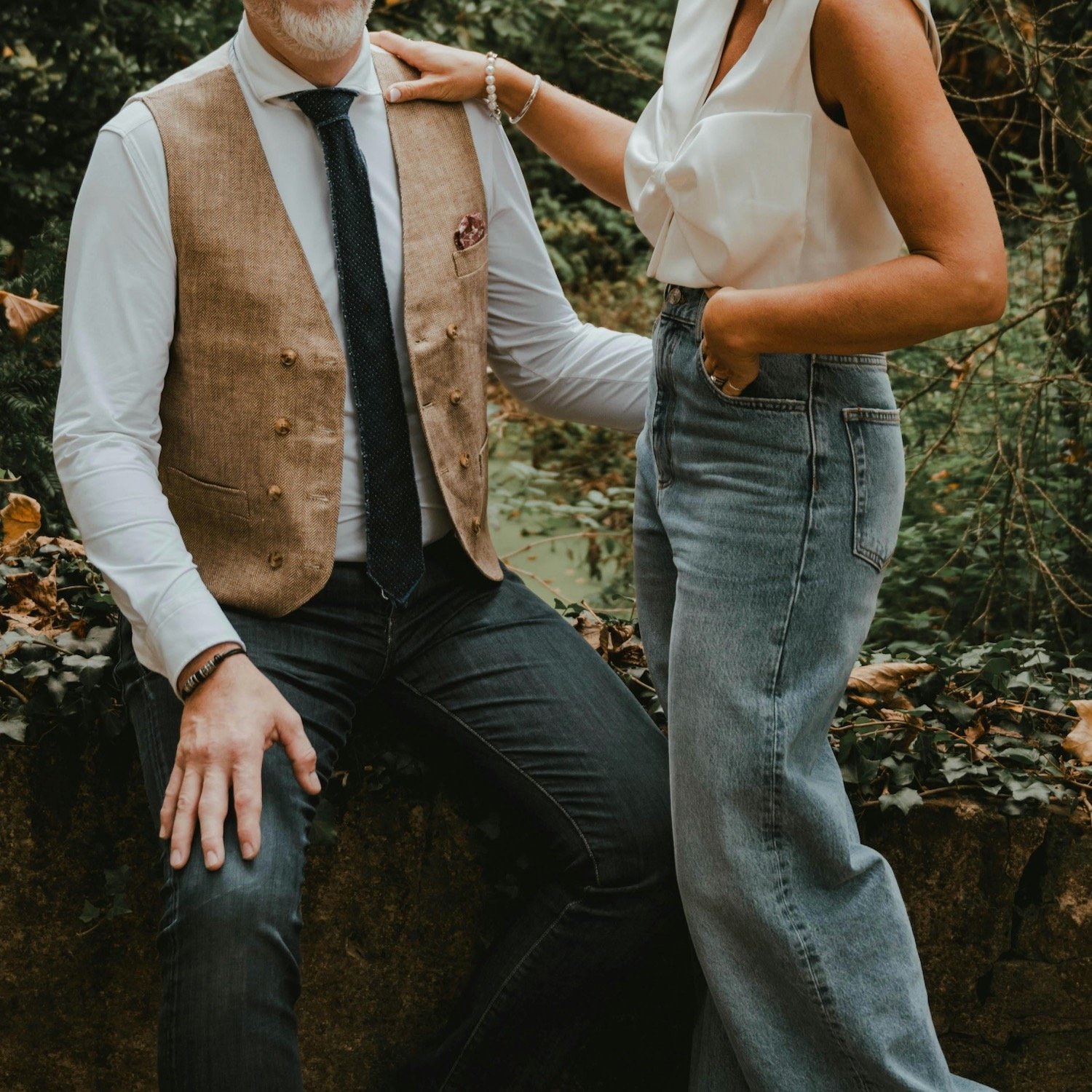What Is Trauma Bonding?
by Marissa Pomerance
You know how we get caught up in intense, “passionate” relationships that totally consume us, and make keep us coming back for more, despite how codependent or unhealthy they might be?
And then we wonder why we’re attracted to people who are emotionally unavailable, or treat us badly?
It could be because of something called “trauma bonding.”
It’s why we feel particularly connected to people we’re in terrible relationships with. It’s why we might even feel drawn to these people.
We wanted to learn more, so we enlisted the help of clinical psychologist and narcissism expert, Dr. Ramani Durvasula. Here’s everything you need to know about trauma bonds.
What is trauma bonding?
According to Dr. Ramani, “trauma bonding is a relationship cycle whereby earlier life history experiences of trauma are replicated in adult relationships.” And, she says, “it reflects a pattern whereby a person remains bonded, or remains in an unhealthy relationship characterized by manipulation, invalidation, and emotional or other forms of abuse. Early experiences of neglectful, chaotic, inconsistent, and in some cases, abusive relationships, impact attachment and relational expectations, and result in an equating of love and abuse. Or a relationship being a place where a person is always having to ‘work’ to maintain a partner’s interest.”
Why does this happen? Well, going through a traumatic event causes our body to enter its fight or flight response, which prompts our brains to latch onto something safe to help us get through the trauma. So when there’s conflict, yelling, or abuse in a relationship, we seek comfort in those moments when the perpetrator is offering us comfort—through breadcrumbs of love, affection, comfort, or apologies, and that’s what create this strong connection, or the “trauma bond.”
Over time, these bonds can even become hormonal and chemical.
Though it can happen in any relationship—with a parent, family member, or friend—it’s common in romantic relationships, and might look like “justification, falling for future promises that never come to fruition, repeating the same fights over and over again, fear of abandonment, fear of being alone, and hiding feelings of fear for a partner,” says Dr. Ramani.
And unsurprisingly, trauma bonds are more likely to happen with unhealthy partners, specifically, “people with high conflict and antagonistic styles such as narcissism, borderline, psychopathy, and passive-aggressive styles,” says Dr. Ramani.
What does it have to do with childhood?
Well, as it turns out, a lot. Because like everything else in adulthood, our unhealthy adult relationships can resemble traumatic, unhealthy relationships from our childhood.
If our childhood relationships were “characterized by neglect, abuse, manipulation, and invalidation, we had to create rationalizations and justifications for those relationships,” and “in the absence of corrective experiences or therapy to help us make sense of the abuse, there is a repetition of these familiar cycles into adulthood, and people may feel an ‘irrational draw’ to unhealthy relationships,” Dr. Ramani says.
Maybe this sounds familiar. Telling ourselves, when things went south with our parents, that they were “trying their best,” or “they don't mean to yell,’” or “I know they love me, and being mean is just how they show it,” was our way of protecting our relationships with the people we depended on for our literal survival. So in some ways, a trauma bond is a survival strategy—a way our minds adapted to traumatic relationships to guarantee our survival, even at the expense of our own needs.
It’s even more pronounced for those of us with insecure attachment styles. “A person with an anxious attachment style often has fears around abandonment, and will do anything they can to avoid being abandoned, which is why they may rationalize the unhealthy cycles and just keep playing out the same arguments over and over—to avoid being alone,” Dr. Ramani explains.
Why do we think this is “passion”?
This may feel obvious, but here’s where things actually get sticky.
In the moment, the highs and lows of trauma-bonded relationships can feel like passion—to have someone fighting for us, invested in us, who cares about us so much, they don’t ever want us to leave. This might even feel like love.
But it turns out that’s what our trauma-bonded brains are telling us to justify unhealthy behavior.
If you’re enduring “disrespect, gaslighting, manipulation, and invalidation in the name of the ‘passion, intensity or chemistry,’” then you might be in a trauma-bonded relationship, says Dr. Ramani. But, if that passion, intensity, and chemistry “happens against a backdrop of kindness, compassion, empathy, respect, reciprocity, then it is not trauma bonding,” she explains.
Image from Instagram/ @patricialamastherapy
How do we break the trauma bond?
Like anything else related to mental health, relationships, and trauma, this is going to be incredibly personal, and there’s no one-size-fits-all solution or easy 5-step process to follow.
Instead, according to Dr. Ramani, the first step includes recognizing “when something is unhealthy, giving oneself permission to communicate and if nothing changes, to set a boundary or step away.”
Sometimes, we might “detect these patterns and then make a thoughtful decision that this it not for us, discuss it in therapy, and disengage.” But other times, especially in the case of high-conflict personality styles, “there is no fixing the relationship because the personality styles often involved are not amenable to change. More often than not, these relationships cannot really be taken to a healthy space,” says Dr. Ramani.
And of course, it doesn’t hurt to have a solid support system and a good therapist.
Here are a few resources to get you started:
Dr. Ramani’s Youtube and Instagram: These are full of helpful information on unhealthy relational dynamics, narcissism, and trauma bonds.
Couples Learn Therapy: Our friends at Couples Learn offer free 30-minute consultations (online!) for individuals struggling with relationship issues.
This article on 10 steps for recovering from a trauma-bonded relationship.
Love Is Respect: A great resource filled with information for ending unhealthy relationships.
Women Against Abuse: This site has a robust list of resources from counseling and legal aid to safety planning.
The National Domestic Violence Hotline: A hotline for anyone in an abusive relationship.
Marissa Pomerance is the Managing Editor of The Candidly. She’s a Los Angeles native and lover of all things food, style, beauty, and wellness. You can find more of her articles here.
This article is for informational purposes only. It is not intended to be used in place of professional advice, medical treatment, or professional care in any way. This article is not intended to be and should not be a substitute for professional care, advice or treatment. Please consult with your physician or healthcare provider before changing any health regimen. This article is not intended to diagnose, treat, or prevent disease of any kind. Read our Terms & Conditions and Privacy Policy.








